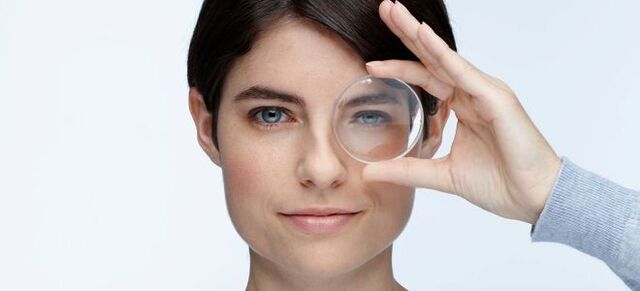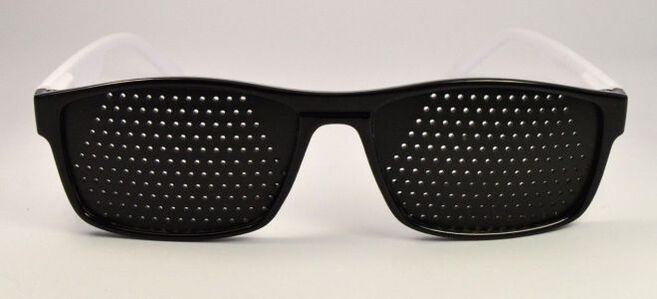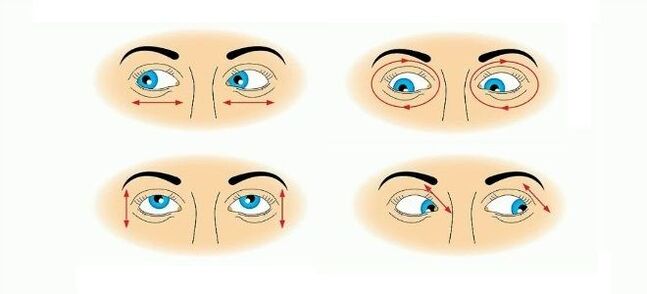
Myopia (myopia) and farsightedness (hyperopia) are the most common eye diseases.People of all ages are the subject of the first illness, including young children, the second problem mentioned more often in the elderly.There are many methods of treating pathologies, but not all are effective.
Is it possible to restore vision?
Progress in ophthalmology does not yet provide successful treatment for many diseases.The answer to the question of whether it is possible to improve vision depends on the severity of the pathology, the timeliness of the search for help, the quality of therapy.You cannot restore eye functions in the following diseases:
- old retinal degeneration and dystrophy;
- neuropathy and atrophy of the optic nerve;
- blindness;
- Maculodystrophy.
Ophthalmologists offer surgery with supportive conservative treatment if such pathologies have been diagnosed:
- Corneal distribution;
- Belmo;
- keratoconus;
- the dislocation and subluxation of the lens;
- cataracts;
- Destruction, a detachment of the posterior vitreous;
- keratoglobus;
- internal bleeding;
- complex keratitis;
- omissions and detachment of the retina;
- hypertonic and diabetic retinopathy;
- Ischemic neuropathy;
- glaucoma;
- Neuritis.
Even the professionally performed operation will not completely normalize vision.He will restore it significantly, but he will not return his previous sharpness.With myopia, Farsightedness and Astigmatism, laser correction will become the recommended method of how to improve vision.This is a small -traumatic corneal surgery.It is effective if myopia is smaller than -12.0 diopters and hyperopy is no more than 6.0.Otherwise, the lens is refracted.
Methods of visual restoration
The technologies for normalizing the functions of the eye are conditionally divided into 2 categories - surgical, including laser correction and conservative.Complete vision restoration is considered possible only in mild or temporary disorders, such as mild injuries, hormonal disorders, brain turmoil and other problems.If myopia, hyperopia or one of these diseases in combination with astigmatism are diagnosed, you can significantly improve eye function.
How to restore vision with myopia?

The easiest and most effective option is glasses or contact lenses.This is the only way to improve vision with short -sightedness immediately and safely.Glasses and lenses allow you to compensate for the disturbance of the ratio between the length of the eyeball and the refraction force.There is a myth that wearing such accessories leads to a deterioration of visual acuity and the progression of myopia.This delusion, properly selected glasses and lenses do not in any way affect the disease.
A more radical way to restore vision in myopia lies in laser correction.The operation is performed on the cornea (the outer sheath of the eyeball).During the procedure, the doctor changes its thickness depending on the degree of myopia.Laser correction has a large list of contraindications and does not always produce the expected therapeutic effect.
How to restore your vision with Farsightedness?
Hyperopy is similarly adjusted by wearing lenses and glasses.The pathology described develops closer to old age, 45-50 years, often full of myopia.Ophthalmologists recommend only two surgical techniques if progression
- Corneal laser correction;
- Intodranculatory replacement of the lens.
Operation to restore vision
There are many surgical technologies needed to improve eye functions, they are selected in accordance with the diagnosis:
- cataract removal;
- Cutting of the vitreous;
- Crossing;
- Installation of implants formed by a ring in the cornea;
- Intravitally administration of medicines and others.
In the case of myopia and farsightedness, two types of operations are used:
- Refraction or restoration of laser vision.There are three variations of surgery - the impact on the outer part of the cornea (French);access to the inner layers through the valve formed by a tangent incision (LASIK);Microscopic section (Relex Smile).The essence of the operation is to normalize the focus of the eye due to a change in the thickness of the cornea.
- Installation of an intraocular lens (IOL).This method, how to restore vision, is used for significant myopia (from -12.0 diopters) and hyperopropic (from 6.0 diopters).During the procedure, the surgeon removes his own lens and implanted the artificial lens.
How to restore vision without surgery?

On the Internet you can find many ways to improve eyes of the eyes, including the most popular:
- hard lenses;
- special goggles with perforation;
- exercises and gymnastics;
- drops;
- biologically active supplements;
- folk recipes;
- vitamin-mineral complexes;
- Diet correction.
The answer to the question is whether it is possible to restore vision with these methods, in most cases negatively.The only situation where some of these techniques work is a false short -sightedness or spasm of accommodation.With true myopia, hyperopia and astigmatism, neither individually nor in the complex, the presented treatment does not lead to the expected effect.
Visual restoration lenses
The method under consideration is called orthokeratology.The devices used are hard lenses at night to adjust vision (with my short -sightedness).They are made of biomotted gas pipeline material so that they do not interfere during sleep and do not cause unpleasant sensations.The lenses are selected by a doctor made individually for each patient.They are worn in the evening before they go to bed with the help of a special pipette.In the morning (after 7-10 hours) the lenses are removed and placed in an antiseptic storage solution.
Due to the hard frame of the device, the curvature of the cornea changes, providing temporary (up to one day) normalizing its shape.Orthopratology is not a method of restoring vision.The effect of night lenses only lasts 1 day, after which the cornea takes the previous shape and the clarity of the image is deteriorating again.The accessories described are more likely to appoint children to make life more convenient before laser correction and prevent the progression of myopia.
Eyes for visual restorations
The presented version of the treatment is the most reflective.These glasses are a frame with perforated black plastic slabs.The holes are small and multiple, located in pseudo -chuck.For a long time, holes with holes have been considered a simple and inexpensive way to improve vision at home compared to professional efficiency simulators, but manufacturers' statements have no basis of evidence.

The principle of action is identical to the murals or shock from the camera-if you look at the object through a small hole, the place to scatter the retina is narrow, and the picture is clearer and more acute.This is not a way to restore vision, glasses do not even prevent the progression of eye diseases.They are simply easier to take into account individual letters or objects.Medical studies refute all the therapeutic properties of perforated glasses, and the most experiment shows that their constant wearing even harms.
Visual Recovery Exercises
There are many gymnastics options that, according to its inventors, normalize the focus.According to medical research, eye restoration exercises are a myth.Regular classes only help in the case of muscle surge, for example, with a spasm of accommodation or false short -sightedness.In this situation, you can perform any most eye exercise to improve vision.Gymnastics helps to relax muscle and eliminate spasms (in combination with other methods of therapy).

The sensational palm or Bates method for vision restoration was completely criticized by ophthalmologists.This method of treatment is based on two statements:
- The reason for the worsening of vision is mental stress.
- The eye is focused not due to a change in the curvature of the lens, but due to the deformation of the apple with its surrounding muscles.
None of these theoretical provisions has been proven experimentally and in practical use Bates' technique has led to the expected therapeutic effect.Even with systematic classes for several years, it was not possible to determine significant positive results in patients with short -sightedness, hyperopia and astigmatism.
Visual restoration drops
It is categorically impossible to trust an advertisement that promises a cure for myopia or myopia using solutions.Eye drops that improve vision have not yet been invented.There are local ophthalmic agents prescribed in combination with the course of therapy after surgical interventions, with spasm of accommodation, infectious and other pathologies.They produce an antiseptic, antimicrobial and relaxing effect, but do not affect the ability of the lens to focus.
Tablets for visual restoration
In the same way, drops, oral preparations that guarantee the normalization of eye functions have not yet been developed.There are no effective ways to restore vision at home with the help of pills.Each remedy is biologically active supplements.They slightly improve the nutrition of the tissues around the eyeball, but do not affect its refractional functions.There are no methods of how to see the remedy.Ophthalmologists do not advise spending money on expensive nutritional supplements, it is better to invest it in laser correction.
Folk remedies for visual recovery
Alternative medicine in this case is also powerless.It is impossible to improve vision with folk remedies, even to use them throughout your life.Some recipes, especially based on toxic plants with alkaloids in the composition, can even worsen the situation.It is very dangerous for people, prone to allergic reactions and irritations.There is a risk of chemical burning of the mucous membranes, the attachment of a secondary infection.
Vitamins that improve vision
Without carotene and ascorbic acid, the functions of the eye worsen, but the deficiency of these substances is extremely rare.No ophthalmologist will answer which vitamin improves vision.If there are problems with focus and clarity, no complexes will help correct the situation.Vitamins can only be prescribed as maintenance therapy after and on the eve of surgery.Particular attention is paid to medicines with such substances in the composition:
- Vitamins A, C, E, Group B;
- Lutein;
- zinc;
- Zeaksantin.
Products to improve vision
Certain food contains components that improve metabolism in tissues and fluids that interact with the eyes.What products improve vision, according to ophthalmologist patients:
- green leafy vegetables;
- Rocks of fish salmon;
- blueberry;
- carrot;
- legumes;
- citrus fruits;
- Nuts and seeds.
It is important to understand that the complete change in the diet and consumption of the listed products in large quantities will not restore lost vision.Myopia, even false, farsightedness, astigmatism and other serious eye disorders are not treated with a diet.Doctors are advised to simply monitor weight, as obesity increases the risk of glaucoma and diabetic retinopathy.




















